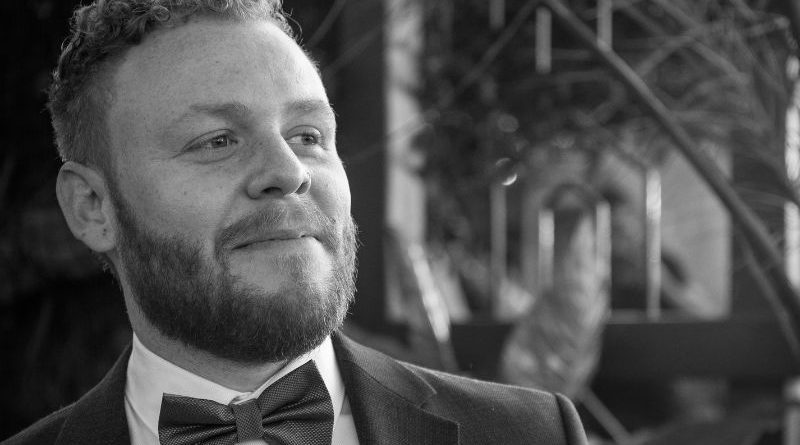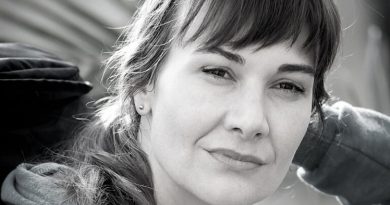Sean Mongie on ‘The House That Never Sleeps’
Sean Mongie, writer-director of the acclaimed short film The House That Never Sleeps, serves up a chilling exploration of memory and unseen forces. In this interview with Mongie, we discuss the film’s genesis, the challenges of bringing its ethereal horrors to life, and the profound questions it poses about our perceptions.
How did the concept for The House That Never Sleeps come about?
I was struggling to write one day, and the idea occurred to me that it would be great to be able to lock myself up and force myself to do it. Sort of a toxic version of what Stephen King writes as the need for a shut door in one’s writing practice.
The more I thought about it though, the more the idea seemed horrifying, and it developed into a metaphor for a toxic kind of creativity, one which isn’t grounded in inspiration or community or collaboration.
How did you achieve the delicate balance… ensuring the magic realism felt grounded rather than purely fantastical?
It was a process of discovery through the writing process. Initially the concept was more of a straight horror, and more about the plot twist. As I wrote the script it becomes much more of a character study of this aging artist who has lost touch with his own joy.
The idea of a grounded magical realism felt appropriate for a story about storytelling – is it magic or just hard work? I hope the audience can watch the film and decide for themselves whether it’s real or not.
Could you tell us how the architecture and various spaces were intentionally designed or utilized to reflect the psychological and emotional state of the artist within it?
The earliest drafts of the script were overly invested in the Western horror trope of horror houses and basements – but we don’t really have that history of architecture here, or not in a way that felt easy for production.
While I kept the title, the story is really about an artist who has been living in a bookbinding workshop their whole life. Pieter Grobbelaar, served many roles on this film, but I think the biggest impact he had was helping me find the location that became The House. We went all over Johannesburg looking for the right place that felt like it had the history and evocative spaces we wanted – Doorfontein, Maboneng, Mayfair, Selby. But we eventually found the right space with Victory House in the Marshalltown banking district.

I immediately fell in love with its windows which have these sorts of human silhouettes, but we then had to bring the world to life with painstaking set-dressing. I’m very proud that for a short film on a tight budget we managed to bring the haunted libraries and halls to life as I saw them in my head.
As a story about books, and someone who makes them, writes them, and lives, almost drowning, in them, we knew we were never going to find a space that had everything. We brought thousands of books to the space – something that was a back-breaking act for our
production design team.
I worked closely with Alan Jeffrey, a master bookbinder who used to work at the Brenthurst Library to be true to the profession. One of the great joys of the process was getting Mothusi Magano to train with him in one of the most mesmerising parts of the profession – ink marbling.
Most of the props and details (even Ayanda’s apron) came from Alan’s own workshop and I’m immensely grateful for how generous he was with his time. For scenes that were too densely covered in books to achieve with set dressing, we shot for a few hours at Collectors Treasury, an eight-storey maze of books that I still feel guilty for subjecting my claustrophobic DOP to.

What message were you hoping to convey about the evolution of the artistic landscape in Africa?
I think to survive as an African artist you have to wear so many hats – producer, publicist, writer, performer, the list goes on. On a little and metaphoric level this film explores the cost of having to split yourself to survive as an artist. Is there another way? I hope the film suggests what that might be.
What was your process in developing Ayanda Mkhize? Was there a direct inspiration and did you write the part for Mothusi Magano?
Ayanda Mkhize was initially a younger writer in the first draft of the story, still at the height of his prolific fame, but as I was developing the story with script editor Julie Hall, funded by the NFVF, I became interested in exploring what would happen if this kind of self-sacrifice went on much longer until the well runs dry.
In many ways I think it’s a fear of many African artists. We face burnout, and repeated rejection and along the path to creativity it starts to feel delusional. Jonathan Kovel was the one to initially suggest Mothusi to me – they worked together on Of Good Report.
Ayanda is a very quiet character, and I wanted someone with an understated approach. Mothusi has this amazing ability to do so much with so little. He just sinks into it and it was such a privilege to get to work with him. We spoke a lot about the story and world before shooting, but he really understood the character on a level that made directing him effortless. He had some amazing ideas about how he wanted to play the role, and I can’t wait for people to see him in this.

What were some of the key decisions made in production design and art direction to achieve this timeless quality?
Part of the process was the laborious and layered approach to making The House feel lived in, with our amazing production designer, Ashley Sizwe Morley working for weeks to bring it to life. But I think a lot of the timeless quality of the images comes from working with Jonathan Kovel to craft the cinematic language. He has a very classical approach to lighting and moving the camera that was ideal for this story. As a narrative about someone stuck, we really wanted it to feel painterly in our compositions, and that any movement was earned.
What was the inspiration behind the “device”?
The Box was really the first kernel of the idea for the story, but I went through a lot of revision to script, and we scoured the internet looking for the right prop. Without spoiling too much, we had to make a duplicate of it to sell some of its magic and mystery, and we scrambled to get that ready almost until the day it was needed on set.
While we have a lot of lore behind the Box’s origins, and how Ayanda’s father finds it, it is a sort of MacGuffin that the audience gets to project their own fantasies onto: How would they use it? Would they do what Ayanda does?




